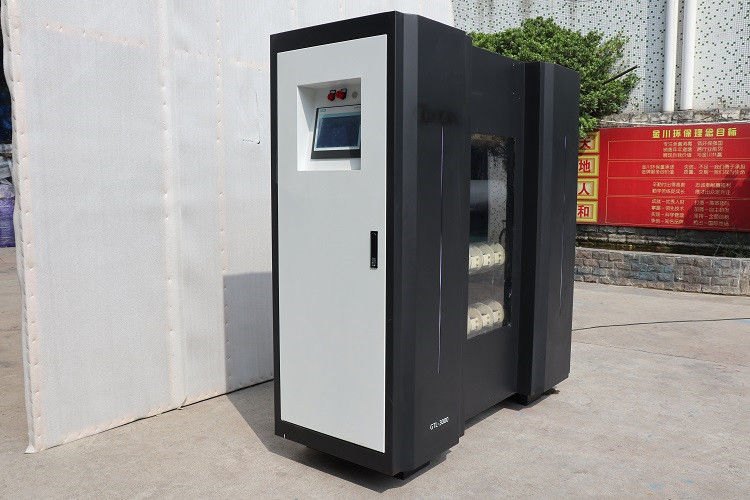Product Description
Brine electrolyzer water electrolysis machine for making 0.8% sodium hypochlorite solution
Introduction
Geemblue series sodium hypochlorite generator include electrolytic cell, internal water softener, salt saturator as well as dosing pumps. The unit complies with requirements and safety regulations regarding storage of products containing sodium hypochlorite, thus making a separate room for storage unnecessary. Note that this product does NOT contain chlorine gas and the electrolysis do not generate wastewater and do not require cooling/heating.
Process
1. Influent water is passed through a water softener.
2. Using softened water to dissolve the salt in a tank to form a concentrated brine solution.
3. Diluted into 2.5%-3% after filtered (If use sea water as raw material, it will be treated before electrolysis)
3. The diluted brine is electrolyzed to a 0.8% solution of sodium hypochlorite.
4. The 0.8% hypochlorite solution flows into a storage tank.
5. The sodium hypochlorite solution will be injected into the pipe by metering pump.
6. The residual chlorine detector will monitor residual chlorine and return feedback to the PLC center.
7. According to preset standards, the PLC Center will adjust the speed of the dosing pump.
Applications
♪ Potable water treatment for drinking purpose
♪ Cooling water treatment algae control
♪ Waste water treatment
♪ Effluent control including treatment of sewage.
♪ Swimming pool chlorination.
♪ Open well water treatment
♪ Hospital disinfection and hygiene maintenance
♪ Hospital waste management.
♪ Sterilizer for food processing in Hotel and Restaurants.
♪ Meat and Poultry processing facilities disinfection.
♪ Sterilizer for food consumable and perishable Packing Plants.
♪ Public places disinfection
♪ Public health water treatment to control micro-organisms, destroy hydrogen sulphide (rotten egg odour), colour algae growth and keeps transmission pipes clean.
♪ Laundry and bleaching.
♪ General purpose domestic bleach and disinfectant.
♪ Poultry water disinfection.
♪ General farm sanitation, odour control.
♪ Dairy equipment sterilization
♪ Manufacture of oxidized starch.
♪ Bleaching of textiles, paper shellac, carpets, alginates.
♪ Fisheries.
Compared with other disinfection methods
| On-site prepared NaClO |
The safest chemical disinfection method, environmental non-toxic, liquid dosing, on site and on demand |
| Liquid chlorine |
Chlorine is toxic and corrosive. Chlorine transport and storage are unsafe, easily cause leaks and explosions, harm to human life and the environment |
| Commercial NaClO |
Dangerous goods, unsafe to transport and storage, When stored easily degradable and the storage time is short. High transport costs, the liquid dosing |
| Chlorine Dioxide |
Compound type reaction was not complete, dosing by-product exceeded; high purity type operating costs, are not suitable for medium-sized water plant |
Factory




 Your message must be between 20-3,000 characters!
Your message must be between 20-3,000 characters! Please check your E-mail!
Please check your E-mail!  Your message must be between 20-3,000 characters!
Your message must be between 20-3,000 characters! Please check your E-mail!
Please check your E-mail! 





